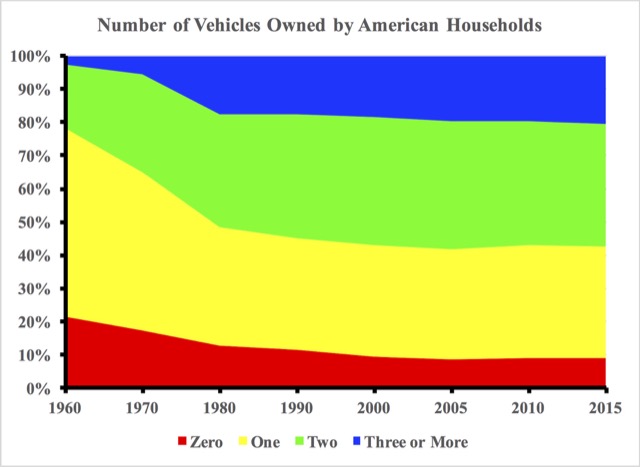In 1960, when most of the nation’s transit was private (and profitable), 7.81 million people took transit to work. By 2015, the nation’s working population had grown by nearly 130 percent, and taxpayers had spent well over a trillion dollars improving and operating urban transit systems. Yet the number of people taking transit to work had declined to 7.76 million.
The share of households that owns no vehicles has declined from 22 percent in 1960 to 9 percent today, while the share owning three or more vehicles has grown from 3 percent to 20 percent.
Although 7.76 million isn’t a few, commuting is only a small share of the travel people do. In 2014, Americans drove 5.1 billion miles a day in urban areas, which (at 1.67 people per car) works out to 3.1 trillion passenger miles per year. The 57 billion passenger miles carried by urban transit was just 1.8 percent of the total. Add walking, cycling, motorcycles, and other forms of travel, and transit’s share is even smaller.








